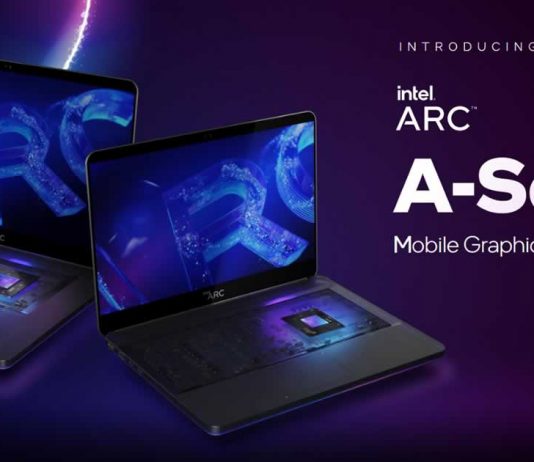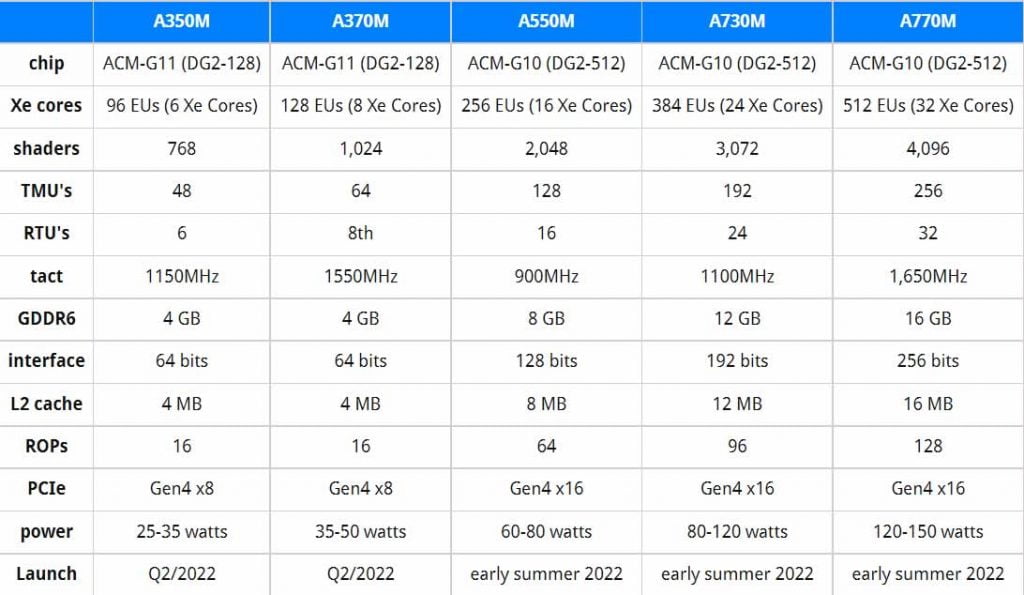Intel has officially announced its first dedicated Arc family GPUs — Intel Arc A-Series — it starts from the mobile world, with five models called A770M, A730M, A550M, A370M and A350M.
Based on the Xe High-Performance Graphics (HPG) architecture, the first generation of Arc is internally called Alchemist, is made by TSMC with the N6 production process.
The first thing to know is that Intel Arc, in a similar way to processor nomenclature, will be divided into three numbered series: Intel Arc 3, Intel Arc 5, and Intel Arc 7.
The first of them, the most basic of all and intended for ultra-light and thin laptops, will be available from now — for OEM partners — with the A350M and A370M chips, which aim at 1080p gaming and up to 90 FPS (frames per second ). The higher performance GPUs, however, will see the light until the summer of this year.
Intel’s entire offering is based on two GPUs renamed ACM-G10 and ACM-G11 (also known so far as DG2-512 and DG2-128), with 32 and 8 Xe-Cores respectively. The A550M, A730M and A770M solutions are based on the G10 variant, which means they have up to 32 Xe-Cores, but only the A770M model has all active units: the A730M and A550M offer 24 and 16 Xe-Cores respectively.
The A370M and A350M proposals based on the G11 variant contemplate up to 8 Xe-Cores, but the only model to have them all active is the A370M, while the A350M stops at 6.
These are all the versions of the first generation with their respective characteristics:
Intel Arc cores are also distinguished by embracing Xe Matrix Extensions, a technology that, compared to a traditional GPU, increases up to 16 times the computing capacity to perform artificial intelligence processes.
With the media engine, Intel speaks of decoding and encoding for AV1, H.264, H.265 and VP9. Up to 8K60 with 12 bits (decoding) and up to 8K60 with 10 bits (encoding) are possible, but it is unclear whether this applies to all codecs. In addition to Displayport 1.4a, Displayport 2.0 (UHBR10 ready) and HDMI 2.0b are supported, but no HDMI 2.1.
Intel Arc will support Microsoft’s DirectX 12 Ultimate, which in turn opens the door to Ray Tracing, variable-rate shading, mesh shadowing, and sampler feedback. Intel claims that it is capable of running a game at 4K resolution while maintaining the performance (FPS) that we would have with native 1080p.
Another pillar will be Deep Link, which guarantees full compatibility of Intel Arc with processors with integrated graphics from Intel itself. The goal is to take advantage of both chips to increase performance in games, content creation and streaming.



